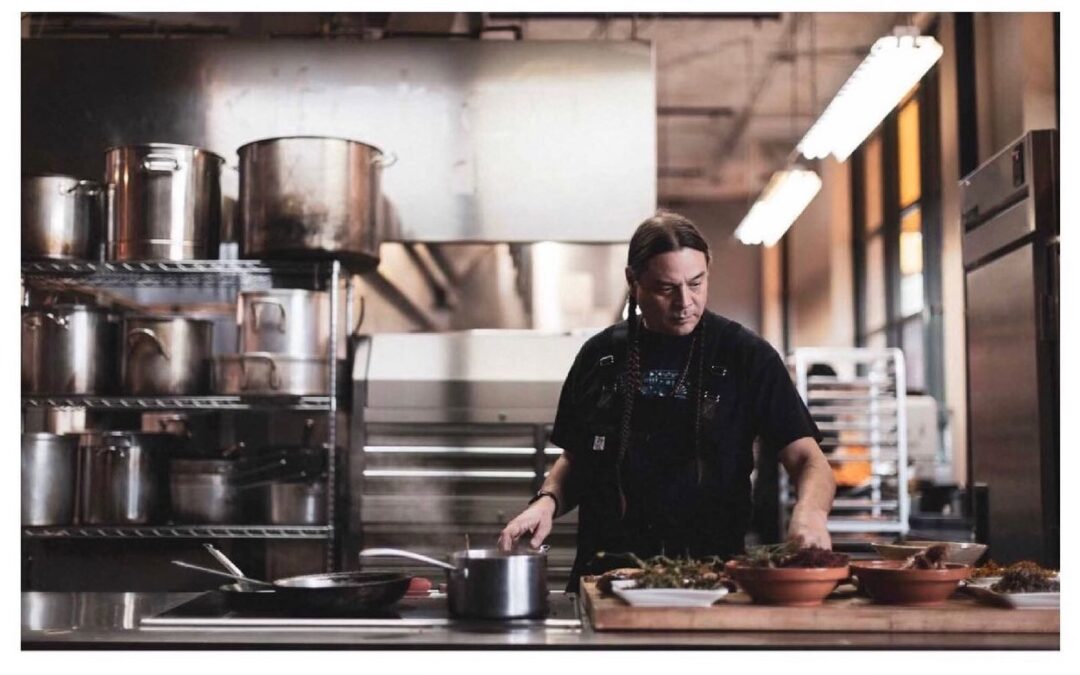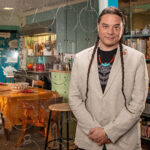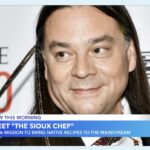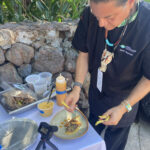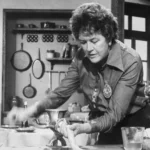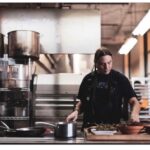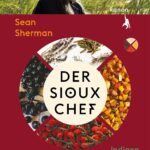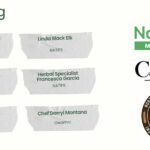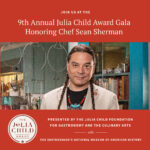Sean Sherman is on a roll. Known as “the Sioux Chef,” he is probably the most high-profile advocate for Native foodways in the United States. His Minneapolis restaurant, Owamni, which showcases modern Indigenous foods, won a 2022 James Beard Award for Best New Restaurant. More recently, he made Time magazine’s list of 100 Most Influential People and was named the 2023 recipient of the prestigious Julia Child Award. This summer, he launched the Indigenous Food Lab, a “professional Indigenous kitchen and training center” with an ambitious goal — establishing a new Indigenous food system that supports tribally operated kitchens across North America.
KCRW: I’m so glad to welcome you back to Good Food. You’ve been a very busy guy.
Sean Sherman: It’s true. Lots of travel, lots of projects, lots of things manifesting.
Tell us about this mission of yours with founding the North American Traditional Indigenous Food Systems (NATIFS) and opening the Indigenous Food Lab.
The nonprofit world was something I realized early on was going to be necessary to be able to do this work. Trying to do for-profit businesses, it’s such a hustle. You’re just constantly working so hard for so little money. I really wanted to get this out there larger because the need was so big. From what I grew up with on Pine Ridge, having very little access to much nutrition or to food, in general, and seeing that still being so commonplace in so many tribal communities, we saw an opportunity to try to make a difference. So the nonprofit NATIFS or North American Traditional Indigenous Food Systems was designed to try to be a support center to help develop more food operations and to help restaurateurs, food truck operators, caterers, food producers, whatever it may be. The two goals are creating access to Indigenous foods and creating access to Indigenous education.
We just opened up Indigenous Food Lab, which is in South Minneapolis, where we have a Native market space to sell Native food products from Native food producers. We have a Native classroom where we’re going to be teaching about all facets of Indigenous-focused education, which could be culinary, food preservation, language, medicinals, crafting, basically anything that falls under “Indigenous education.” And [we want to be] a support center regionally, working not only with tribal communities but also with Indigenous entrepreneurs. Our goal was always to replicate. We’ve already planted seeds to start opening up extensions of Indigenous Food Lab in places like Anchorage, Alaska; Bozeman, Montana; Rapid City, South Dakota. We’re even exploring Oahu. We have other places down the road that are interested in this work
In terms of the embrace from communities, are you finding that the younger generations are more estranged than they have been in the past, or more connected or curious?
I think there’s a big resurgence happening with connecting Indigenous peoples to our ancestry, especially in foodways. From our perspective, we’ve seen this Indigenous food sovereignty movement really explode, not only here in the US but all over the place — up in Canada, overseas. We see Indigenous peoples on a global scale. There’s just so much interest in finding ways to help secure cultures for future generations and create more access to these culturally relevant foods.
All of us, as Indigenous peoples, have this blueprint to live sustainably with the world around us. But so many of our foodways and educational programs have been disrupted by colonialism in different forms all over the place. So it’s identifying and naming what’s happened to us but, at the same time, laying down solutions to help bring this knowledge forward and show that it’s extremely possible in today’s world.
Funding a venture of this nature is always difficult. The Indigenous Food Lab was in the works for several years. Then the pandemic struck. You’re also based in Minneapolis, which was the heart of the George Floyd murder and aftermath. How difficult was it to get the space up and running?
That was quite an interesting time period. At the beginning of January 2020, we found the location that we’re at. We moved in and we were dealing with getting legalities, like leases, out of the way. Then March comes around and the whole world changes. All food service operations just cease, on a global scale. We watched all of our catering disappear up in smoke. We sat for a few weeks.
Then, at the end of May, George Floyd was murdered, just a block south of our location. The street that we’re on is where the social uprising really happened for a few days in a row. All the buildings around us got completely burned to the ground. So we moved in right at the beginning of the pandemic, when there was very little knowledge as to what was going on, and started doing an immense amount of food relief. We were doing 400 meals a day, serving healthy Indigenous foods to our local community, which turned into 10,000 meals a week, sending Indigenous foods to nine out of 11 tribes across Minnesota. That’s kind of how we were born as the Indigenous Food Lab.
“I only had two and half channels growing up and PBS was one of them, so I watched a lot of the cooking shows,” says Sean Sherman, who will be honored with this year’s Julia Child Award. Photo by Bill Phelps.
I’ve heard so many different stories about how the pandemic, while at first creating enormous impediments, also created some amazing opportunities. It sounds like the fact that you were able to send so much Indigenous product to communities in need was kind of a blessing.
Absolutely. It also gave us an opportunity to utilize the support dollars that we had to purchase from Indigenous producers and local producers around us, who also saw their businesses greatly affected by the pandemic. We pushed tens of thousands of dollars into supporting those businesses through a hard time.
Let’s talk about who some of the retailers are that are represented at the Indigenous Food Lab. How did you go about finding and curating the products? Give us some info about who some of them are.
We’ve been able to just reach out. We had a lot of friends out there already doing some of this work. There have already been a few Native markets online. There’s Sakari Farms, out of the Pacific Northwest. There’s Bow & Arrow corn company around Durango, Colorado, which is part of the Ute mountain tribe. We’re buying Pima corn from Ramona Farms south of Arizona. We’re purchasing corn from Potawatomi Nation out in Michigan. We’re using a local farm here in Minneapolis called Dream of Wild Health and buying a lot of fresh farm produce from this Native farm here, close by. We buy a lot of bison from the Cheyenne River Sioux Tribe out of South Dakota. There are all these other products. We have a market manager who has been working with us for quite a while and helping to curate this list that we’re going to continuously grow and bring in more amazing Indigenous food products from Indigenous producers.
You’ve said that children today can name more Kardashians than they can trees. Talk about the educational component of your work.
I think it’s really important because I feel like there’s a war with education happening in our country right now. Some states are writing legislation to completely remove Black and Indigenous histories from what’s available to students. I think it’s so dangerous. We should be learning what happened to Indigenous peoples, the extreme violence led by the United States government against Black and Indigenous peoples across the 1800s, the segregation and oppression that happens across the 1900s and leads into today. There’s so much to learn about.
When we look at education from an Indigenous perspective, first off, we identify that. So Indigenous education was tens of thousands of generations of knowledge being handed down to us to give us the ability to live sustainably with the world around us. That’s part of the work that we’re trying to do, to create a place that stewards Indigenous knowledge, Indigenous perspectives in the world of academia. That’s why we created a studio to create countless videos, eventually, on cooking techniques, on interviews, on language, on crafting, on wild foods and medicinals, on basically anything that falls under an Indigenous-focused perspective on education.
Could you name a couple ingredients that Indigenous communities have really embraced and been so grateful to have back again or, for many, to see for the first time?
Because of the rule sets of living in a colonial world, in a very capitalistic world, there are a lot of rules that inhibit us as Indigenous peoples from having access to our own Indigenous foods. It could be Alaskan Natives trying to have access to whale or seal. Or here in Minnesota, having access to animals like beaver. These fall outside the things that the government allows us to utilize. I think it’s really important for us to have these conversations about the importance of culturally relevant foods, whether it’s protein, agricultural or wild foods. So much of it is land access. We can’t go out and harvest wild foods like our ancestors used to or grow crops because a lot of our seeds have disappeared over the last couple centuries. Here, it’s a constant battle with wild rice and keeping our waterways clean. We’ve seen people like Winona LaDuke fight so hard for this her whole life. We’re just trying to identify the importance of some of these pieces that really make up a big part of our particular cultures, like bison in the Dakotas or even things that become introduced, like trail sheep in Navajo Nation, and the importance of that animal to a lot of the tribes down there. There’s a lot to talk about all over the place.
Last month was unbelievably eventful. You were named the recipient of the 2023 Julia Child Award and the gala will take place in Minneapolis this fall. Tell us a little bit about the recognition and what it means.
It’s just a massive honor to have the Julia Child Award or being nominated by Time magazine as one of the 100 Most Influential People of 2023 or winning the big James Beard Awards, like Best New Restaurant in the United States in 2022. All these things help us get visibility because it’s really hard, coming from where I came from, from Pine Ridge, to even dream about owning a restaurant. To have the ability to hold some of these platforms, to be able to do something with a lot of intention and to have people share this intention through a lot of these writings, to me, it’s a huge honor and it helps us grow. And hopefully it helps open up doors for other people coming in around us and behind us
Was Julia Child an influence on you when you were a young cook?
Well, I only had two-and-a-half channels growing up and PBS was one of them, so I watched a lot of cooking shows. I always enjoyed cooking, even at a very young age. I feel extremely honored that this one has fallen on me and especially with these very recent past Julia Child awardees. I’m happy to be a part of that group of amazing people.
It has been such a humbling experience to get to watch you grow and develop over the years. I’m thrilled for you that you’re getting all this recognition. Thank you for coming to the show.
Well, thank you so much and hopefully I’ll get to see you in your area sometime soon.
